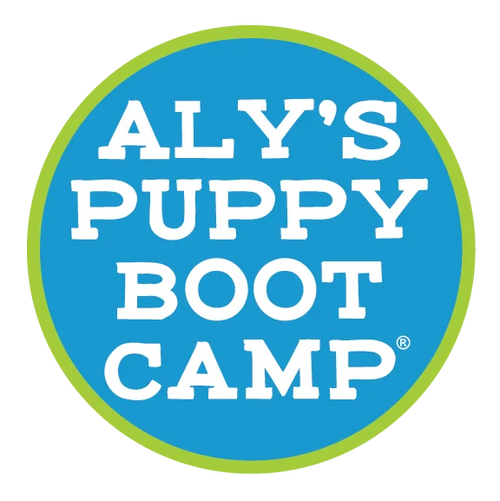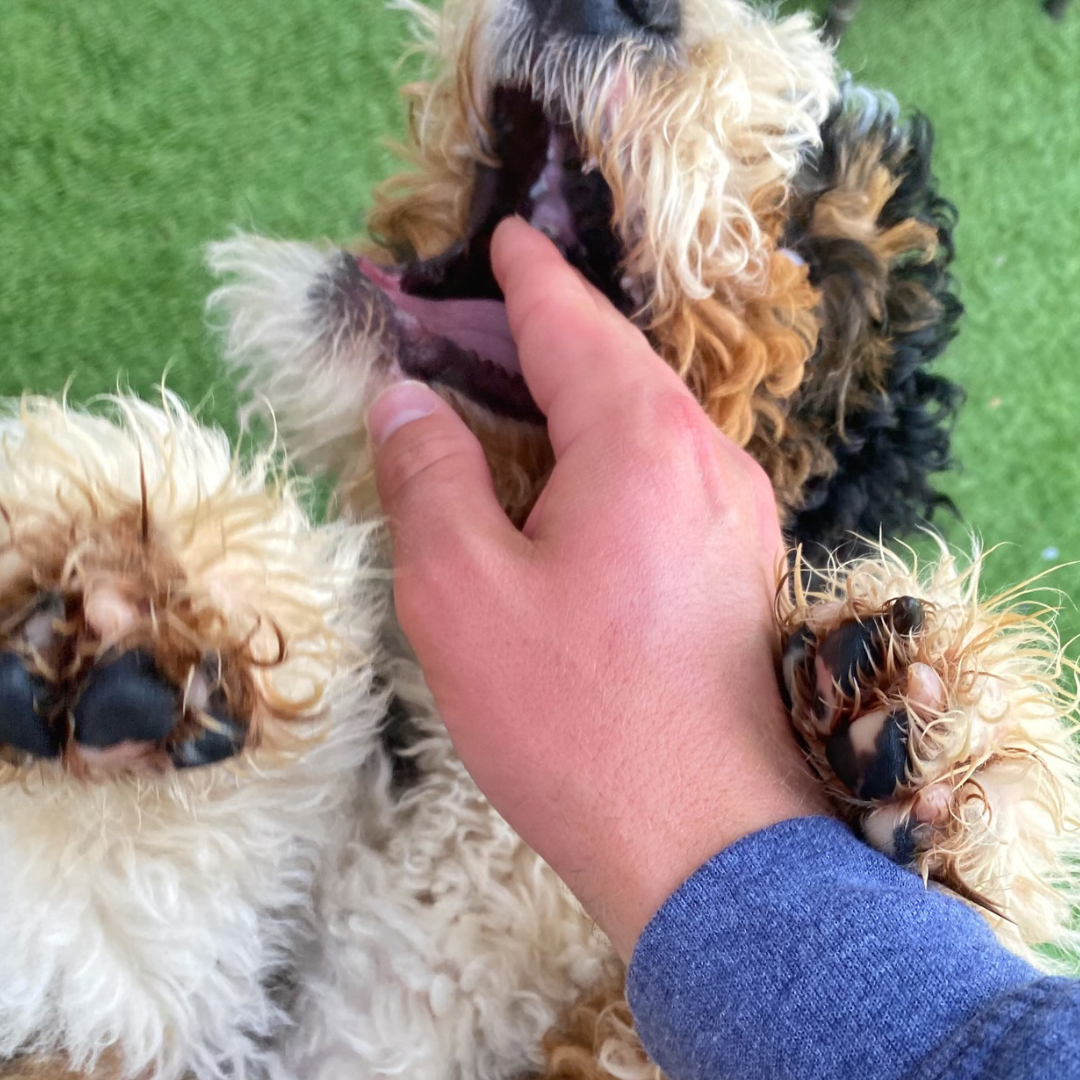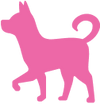How to Stop Puppy Biting
How to Stop Puppy Biting & Nipping….
While puppy biting may appear adorable & normal when your puppy is just eight weeks old, it loses its charm as he grows bigger by the day and reaches the age of three or four months. There are bites and then there are bites! Understanding the different types of puppy biting can help you determine the best strategy for stopping it. It's important to recognize that puppies are naturally oral creatures and use their mouths for a variety of reasons, including play, protest, and defense. Some breeds may be more prone to this behavior than others. When dealing with puppy biting, it's crucial to establish clear boundaries and let your puppy know that putting their mouths on you is not acceptable. However, it's also important to understand your puppy's motivation for biting. Here's another great blog on establishing safe boundaries with dogs and people!
Is it playfulness, fear, or aggression?
When it comes to play biting, such as when a young puppy nips at your hands while you try to pet them, the best defense is a good offense - simply walk away! No need for yelling or words, just abruptly leave and ignore your puppy. Consistency is key here. Before long your puppy will understand that the love and play machine stops when the puppy bites at it! Another great strategy for petting is to distract him by feeding him small treats from your other hand. This will help your puppy to get used to being touched without mouthing. During playtime, make sure the level of play isn't too high, and your puppy will eventually understand that playtime stops when they start biting. If your puppy starts nipping at clothing, feet, or children, it's often a sign of being over-excited. Immediately interrupt that level of play and tone it down. It's a good idea to have leashes on your puppies during playtime so you can quickly intervene and redirect your puppy's attention to an appropriate toy. You can also use a pet convincer, a squirt of bitter apple, or a shaker can with pennies in it to interrupt your puppy's excited nipping. Remember to time the interruption perfectly, and then redirect your puppy's attention to something else, like another play area with toys.
Protest biting occurs when a puppy bites you while you're restraining them, taking a toy away, or disrupting their preferred activity.
This behavior is often a sign of over-tiredness in puppies. If your over-stimulated and nipping puppy displays this behavior, it's necessary to provide them with enforced rest time in their crate or ex-pen. It's important for humans to choose appropriate times to interact with a puppy, take toys away, or move them from one resting spot to another. One effective approach is to use a treat to trade for the item you want to take from the puppy, and guide them to the new spot using a leash. If the puppy is resting, it's best to leave them alone and avoid pestering them.
Defensive biting is a behavior that puppies exhibit when they are scared or feel threatened.
Even well-intentioned humans can unknowingly put dogs in situations that trigger their defense mechanisms. For instance, if a puppy is cornered in a closed area and a child tries to reach out and pet or grab them, they may respond with a nip or bite. The best approach is to give the dog some space and room to feel safe. Take the pressure off the dog. Avoid staring at the dog or reaching out towards them. Instead, take a few steps back and give the puppy a chance to approach you on their own. When the puppy comes to you, reward them with positive reinforcement like saying "Good Boy" and giving them a treat.
Now that you understand there are different types of bites and strategies to modify the circumstances, be sure to start Bite Inhibition education from day one of puppy coming home!
Bite Inhibition
is teaching your puppy that they can control the force of their mouthing when interacting with people. In a pup’s natural world, bite inhibition is learned by puppies during playtime with other puppies. When observing a group of puppies playing, you'll notice activities such as chasing, pouncing, and wrestling, and they often bite each other all over. Occasionally, one puppy may bite too hard, causing the other to yelp and stop playing. The offender is usually surprised by the yelp and also ceases play for a brief period. However, they soon return to the game. This type of interaction teaches puppies to manage the force of their bites so that no one is harmed, and play can continue. Since puppies can learn to be gentle from each other, they can also acquire this skill from people. One of the methods I enjoy employing to teach bite inhibition is through the use of the food game. In one variation of this game, I offer a portion of the puppy's meal from my hand (wear gloves with intense puppies). I clench the food in my fist and if the puppy approaches my hand calmly and gently, I open my fist and allow them to eat the food. However, if the puppy comes at my hand aggressively or forcefully, I keep my fist tightly closed around the food. This approach teaches the puppy that if they are gentle, they will be rewarded with food. In the rare instance that a puppy attempts to grab the food roughly, they receive a quick flick to the nose. This flick serves to startle the puppy and prompt them to pause. As soon as they pause, I release the food. When the puppy approaches my hand in a gentle manner, the food is released without hesitation.
General Guidelines & Precautions
To prevent your puppy from biting and to build a healthy relationship with them, it's important to follow some general precautions. First, avoid waving your fingers or toes in their face or slapping the sides of their face to entice them to play. These actions can encourage the puppy to bite your hands and feet.
Purposeful Play is important to forming a healthy relationship with you and your puppy. All good games have rules, right! So play away, and play in a safe and sane way! Don’t hesitate to play with your puppy, just never allow rude or destructive choices in every game you play!. You can learn more about how to be purposeful with your dog in this blog!
When the puppy mouths, avoid jerking your hands or feet away from them. Doing so can encourage them to jump forward and grab at you. Instead, let your hands or feet go limp so that they aren't as much fun to play with.
Last but not least, make sure to provide your puppy with enough exercise and mental stimulation to keep their energy level under control. It's also crucial to remember to give your puppy enough rest time as well.
Join Aly on Monday 4/3 to learn more on transforming your nervous and anxious dog! We invite you to take a personally guided tour of her Pillars of Pack Leadership Academy–Anxious and Nervous Dogs!!!



